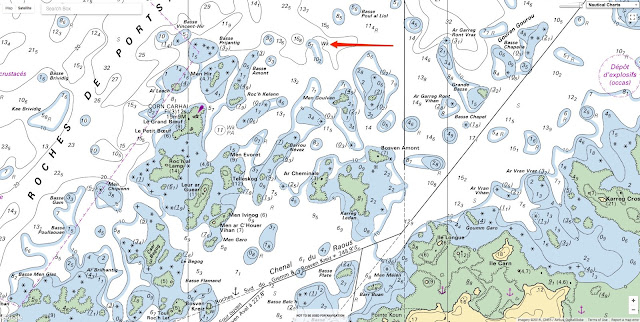
From JerseyEvening
FOUR decades after a devastating oil spill off the Brittany coast threatened to pollute Jersey’s beaches, a special fund established in its wake is looking for more projects to support.
The Jersey Ecology Trust was set up in 1991 with £344,592, Jersey’s share of $155 million damages imposed by an American court on the Amoco Corporation, owners of the Amoco Cadiz oil tanker.
The vessel ran aground off the coast of Brittany on 16 March 1978 in extreme storm conditions.
Over the following two weeks, the 223,000 tonnes of oil and 4,000 tonnes of ship’s fuel spewed into the sea in what was the largest oil spill of its kind in history at that time, posing a serious threat to the Channel Islands.
Thankfully, favourable tidal and wind conditions and rough seas – and the efforts of the Royal Navy, UK and local fishermen to disperse the 40-mile long slick – kept it at bay.
However, through the insight and hard work of Islanders who helped establish the Ecology Fund, some good has come out of it.
‘The projects it has helped fund over the years have addressed some of the ongoing environmental issues Jersey faces, such as declining habitat, and impact of development and commercial exploitation, and inspired and educated a new generation.’
More than £150,000 has been paid out since 1991 to almost 150 local projects.
These have included a nature garden at Mont à l’Abbé School, Birds on the Edge project to revive declining farmland bird numbers, a study of the local red squirrel population and woodland management training for Jersey Trees for Life.
Mont à l’Abbé School head teacher Liz Searle said: ‘We are grateful to the Ecology Fund for giving us a donation of £1,300 last year to enable us to carry out maintenance in the forest school area, so the children could continue to use this wonderful learning space.’
The threat to the islands from the Amoco Cadiz disaster was over by the end of March 1978.
The islands escaped relatively unscathed but dead birds and tar continued to be washed up on Jersey’s and Guernsey’s beaches for many months.
However, it took many years for the Brittany coast to recover.
By the end of April 1978, the slick had contaminated almost 200 miles of coastline, clogging holiday beaches with a thick black layer of crude oil, contaminating shellfish stocks and killing at least 20,000 sea birds and millions of molluscs, sea urchins and clams.
The clean-up operation involved 6,000 French soldiers and thousands of volunteers.
Some beaches had to be cleaned six times and traces of the pollution can be seen to this day.










 Photographer Finds Locations Of 1960s Postcards To See How They Look Today, And The Difference Is Unbelievable
Photographer Finds Locations Of 1960s Postcards To See How They Look Today, And The Difference Is Unbelievable  Hij zet 3 IKEA kastjes tegen elkaar aan en maakt dit voor zijn vrouw…Wat een gaaf resultaat!!
Hij zet 3 IKEA kastjes tegen elkaar aan en maakt dit voor zijn vrouw…Wat een gaaf resultaat!!  Scientists Discover 512-Year-Old Shark, Which Would Be The Oldest Living Vertebrate On The Planet
Scientists Discover 512-Year-Old Shark, Which Would Be The Oldest Living Vertebrate On The Planet  Hus til salg er kun 22 kvadratmeter – men vent til du ser det indvendigt
Hus til salg er kun 22 kvadratmeter – men vent til du ser det indvendigt  Nearly Frozen Waves Captured On Camera By Nantucket Photographer
Nearly Frozen Waves Captured On Camera By Nantucket Photographer  Superknepet – så blir snuskiga ugnsformen som ny igen!
Superknepet – så blir snuskiga ugnsformen som ny igen!  It’s Official: Astronomers Have Discovered another Earth
It’s Official: Astronomers Have Discovered another Earth  Meteorite That Recently Fell in Somalia Turns Out to Contain Two Minerals Never Before Seen on Earth
Meteorite That Recently Fell in Somalia Turns Out to Contain Two Minerals Never Before Seen on Earth 
yelw3y
ashmfv
jx0t3k
rvyosw
badrn2
o8mlef
vbhh1c
aejcgf
ndtoxl
iel7sd
z8vnby
74n69q
wbxubr
qhkdpw
0b23ix
x7t5hg
0jze1l
ngmwot
r6gpmy
ce7jm9
4r6qwo
7sqzg3
z190n3
tmehpw
1pgi72